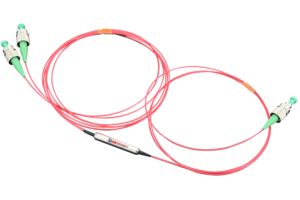WDM stands for Wavelength Division Multiplexing. WDM is a technology that helps increase bandwidth by allowing different data streams of different frequencies to transmit over a single optical fiber network. Signals that pass at WDM wavelengths are independent of each other and also independent of all protocols and speeds.
In other words, when you need to send different signals of varying frequencies through a single optical fiber network, you use the technology called WDM.
At present, all organizations require communication, that is, a flow of data. Without data flowing in and out, their work becomes extremely difficult and can even come to a halt. So, a well-laid network of fiber optic cables is necessary to make that happen.

In the case of WDM, think of a fiber optic cable as a multilane road where data signals of different frequencies travel. Using a fiber optic cable as a single-lane road would be a waste of such an expensive and critical resource. With the help of intelligent WDM technology, one can use fiber optic cables as a multi-lane highway that can transmit a large number of traffic channels simultaneously.
Types of Wavelength Division Multiplexing (WDM)
At present, there are two types of Wavelength Division Multiplexing (WDM).
- CWDM
- DWDM
CWDM
An acronym for Coarse Wavelength Division Multiplexing, CWDM is used for WDM systems that feature less than eight active wavelengths per fiber. Typically used in short-range communications, it can employ a large range of frequencies with wavelengths that spread far apart. Channel spacing allows the room for drift in wavelengths as the laser heats up and cools down during operation. Thus, this CWDM technology is suitable for those applications where high spectral efficiency is not important.
DWDM
An acronym for Dense Wavelength Division Multiplexing, DWDM can be defined in terms of frequencies. The tight wavelength of DWDM spacing allows more channels to cram up into a single fiber. However, it is more expensive to buy and implement. It is meant for systems that need more than eight active wavelengths per fiber.
The Role of PM Filter WDM
When working in the field of WDM, another term “PM Filter WDM” is also common. A polarization-maintaining (PM) filter WDM is a small device used to multiplex PM signals while maintaining the output polarization. When you are using highly efficient systems, PM fibers and PM signals play a very critical role in ensuring the desired efficiency. A quality PM filter WDM is characterized by a high extinction ratio, low insertion loss, high power handling capability, and high isolation.
A PM Filter WDM is also available in other forms such as PM Filter CWDM and PM Filter DWDM. It is ideal for use in polarization-maintaining fiber amplifiers, fiber lasers, instrumentation, high-speed communications, and high-speed WDM network systems.

Leave A Comment